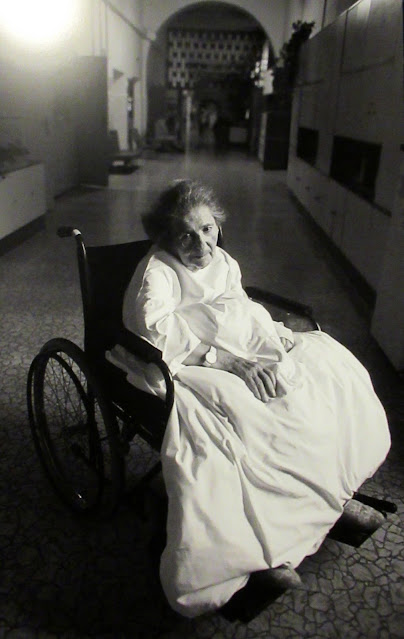'Where they burn books, they will also burn people in the end'. Heinrich Heine.
Last Folio, at the Centro Cultural de Belem.
The images presented in Last Folio are the result of a decade of joint labour by Yuri Dojc and Katya Krausova, the last testimony of a culture and a people - a history that came to a brutal stop when mass deportations to the concentration camps took place. These images are unique in their authenticity and intensity, as beautiful as they are tragic, depicting the ruins of schools, synagogues, books and objects.
Yuri Dojc and Katya Krausova were both born in the former Czechoslovakia, having emigrated in their early twenties to Canada and England respectively, when in 1968 their country was invaded by Soviet troops, an event which put an end to the Prague spring and its dream of democracy.
Yuri Dojc's interest in recording the history of the Holocaust began 'in January 1997, at the funeral of my father, I met a remarkable woman, Mrs Vajnorska. She was one of the thousand or so girls who, in early 1942, boarded the very first train to Auschwitz. She spent three years there, lost her entire family except for her brother. She told me of her daily home visits to others who survived as she did. I asked her if I could accompany her on her daily rounds. She agreed. And so I began photographing these people and the world they live in'.
And then he met Katya Krausova. When they began this project, Yuri Dojc was a photographer who had made a name for himself with his portraits of Jewish survivors of the Holocaust, and Katya Krausova was a successful filmmaker. They had been living outside their country for almost 40 years. Their paths crossed because of their shared interest in the history of Czechoslovakia. From 2005 onwards they spent a decade travelling through a Slovakia still devastated by war, in search of the memories of Holocaust survivors, in an attempt to rescue historical Jewish culture.
Serendipity led Yuri and the documentary film team to an abandoned Jewish School in Eastern Slovakia, where time had stood still since the day in 1942 when all those attending it were taken away to the camps. The school books all still there, essay notebooks with corrections, school reports, even the sugar still in the cupboard.
These decaying books lying on dusty shelves, the last witness of a once thriving culture, are treated by Yuri Dojc as the individual survivors that they are - each book captured as in a portrait, preserved in their final beauty, pictures speaking a thousand words. Amongst these many hundreds of books and fragments photographed by Yuri, one stands out especially - a book that miraculously found its way from a dusty pile to its rightful heir - a book once owned by Yuri's grandfather - Jakub. And so a journey which began at his father's funeral came full circle.
This photograph of the Sastin Synagogue is like a painting by Anselm Kiefer, the great German artist of memory, whose work is a belated witness to the Shoah. Born of the same desire to picture the unimaginable and restore a memory to what has been annihilated, they find an answering echo in Djoc's pictures.
Djoc's photographs of the unbound folios from the Bardejov Jewish school have turned into veritable sculptures.
The haunting quality of the ruins is embodied in Dojc's photographs. Goats graze among columns, frescoes and books in Hebrew. Each fragment reveals the remnants of relics discovered inside a beautiful, 200-year old building. The rich images of these ruins provide a deeply resonant poetic testimony.
'The photos of Yuri Dojc in Last Folio are the patient archaeology of catastrophe. Dojc documents and collects what remains of Jewish history in Slovakia, spanning many centuries before it was wiped out, abruptly, as if by a natural disaster. The culprit was no cataclysm, but the fury unleashed by the Nazis in their attempt to erase every trace of Jewish life from European soil'. Marcio Seligmann-Silva.




































No comments:
Post a Comment